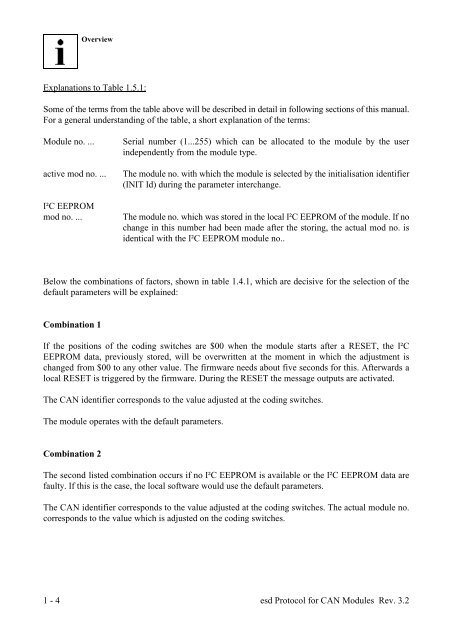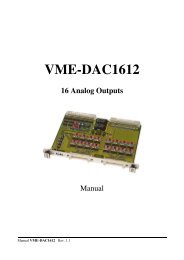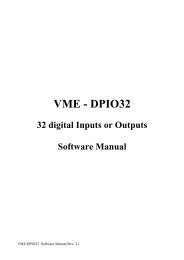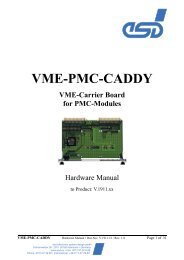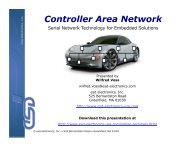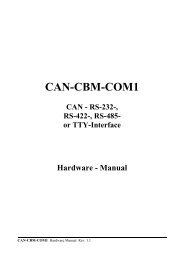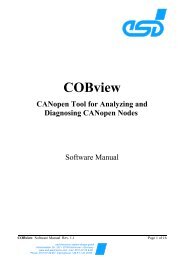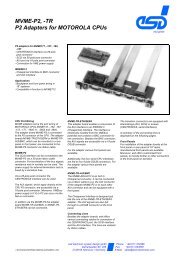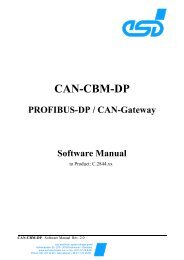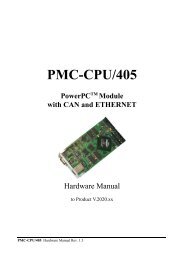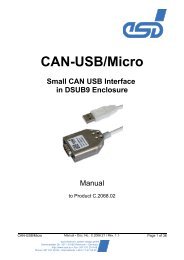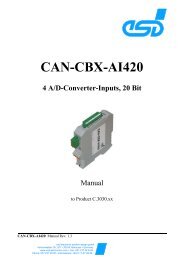esd Protocol for CAN Modules - esd electronics, Inc.
esd Protocol for CAN Modules - esd electronics, Inc.
esd Protocol for CAN Modules - esd electronics, Inc.
Create successful ePaper yourself
Turn your PDF publications into a flip-book with our unique Google optimized e-Paper software.
Overview<br />
Explanations to Table 1.5.1:<br />
Some of the terms from the table above will be described in detail in following sections of this manual.<br />
For a general understanding of the table, a short explanation of the terms:<br />
Module no. ... Serial number (1...255) which can be allocated to the module by the user<br />
independently from the module type.<br />
active mod no. ... The module no. with which the module is selected by the initialisation identifier<br />
(INIT Id) during the parameter interchange.<br />
I²C EEPROM<br />
mod no. ... The module no. which was stored in the local I²C EEPROM of the module. If no<br />
change in this number had been made after the storing, the actual mod no. is<br />
identical with the I²C EEPROM module no..<br />
Below the combinations of factors, shown in table 1.4.1, which are decisive <strong>for</strong> the selection of the<br />
default parameters will be explained:<br />
Combination 1<br />
If the positions of the coding switches are $00 when the module starts after a RESET, the I²C<br />
EEPROM data, previously stored, will be overwritten at the moment in which the adjustment is<br />
changed from $00 to any other value. The firmware needs about five seconds <strong>for</strong> this. Afterwards a<br />
local RESET is triggered by the firmware. During the RESET the message outputs are activated.<br />
The <strong>CAN</strong> identifier corresponds to the value adjusted at the coding switches.<br />
The module operates with the default parameters.<br />
Combination 2<br />
The second listed combination occurs if no I²C EEPROM is available or the I²C EEPROM data are<br />
faulty. If this is the case, the local software would use the default parameters.<br />
The <strong>CAN</strong> identifier corresponds to the value adjusted at the coding switches. The actual module no.<br />
corresponds to the value which is adjusted on the coding switches.<br />
1 - 4<br />
<strong>esd</strong> <strong>Protocol</strong> <strong>for</strong> <strong>CAN</strong> <strong>Modules</strong> Rev. 3.2


